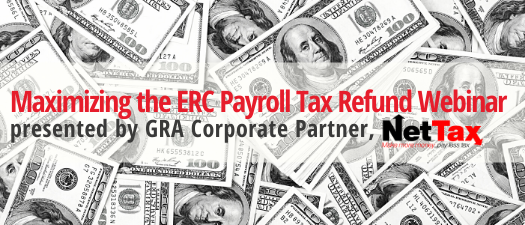Important COVID Related Tax Credits
Updated January 6, 2022
Employee Retention Tax Credit
The employee retention tax credit (ERTC) for employers subject to closure due to coronavirus. The provision provides a refundable payroll tax credit for 50% of wages paid by employers to employees during the crisis. The credit is available to employers whose
-
operations were fully or partially suspended, due to a coronavirus-related shut-down order, or
-
gross receipts declined by more than 50% when compared to the same quarter in the prior year.
For employers with greater than 100 full-time employees, qualified wages are wages paid to employees when they are not providing services due to the coronavirus-related circumstances described above. For eligible employers with 100 or fewer full-time employees, all employee wages qualify for the credit, whether the employer is open for business or subject to a shut-down order. The credit is provided for the first $10,000 of compensation, including health benefits, paid to an eligible employee. The credit is provided for wages paid or incurred from March 12, 2020 and before January 1, 2021. Eligible employers can get immediate access to the credit by reducing employment tax deposits they are otherwise required to make. Also, if the employer's employment tax deposits are not sufficient to cover the credit, the employer may get an advance payment from the IRS.
NetTax
Maximizing the ERC Payroll Refund (October 28, 2021) - Watch the Recording | Access the Presentation
Additional Resources:
IRS FAQ - Employee Retention Credit
ERTC for Small Business Expanded to Include all of 2021 (updated May 2, 2021)
Understanding the Employee Retention Tax Credit (updated April 16, 2021)
Tax Credits for Restaurants providing Employees paid leave to receive COVID-19 Vaccines
An eligible employer is any business, including a tax-exempt organization, with fewer than 500 employees. An eligible employer also includes a governmental employer, other than the federal government and any agency or instrumentality of the federal government that is not an organization described in section 501(c)(1) of the Internal Revenue Code. Self-employed individuals are eligible for similar tax credits.
Paid sick and family leave for which tax credits can be claimed.
Eligible employers are entitled to tax credits for wages paid for leave taken by employees who are not able to work or telework due to reasons related to COVID-19, including leave taken to receive COVID–19 vaccinations or to recover from any injury, disability, illness or condition related to the vaccinations. These tax credits are available for wages paid for leave from April 1, 2021, through September 30, 2021. Read More.
FINANCIAL AID AND TAX GUIDES
The CARES Act allocated $350 billion (and as of April 24, an additional $310 billion) to help small firms keep workers employed. Called the Paycheck Protection Program (PPP), the initiative provides 100% guaranteed loans that can be forgiven if borrowers maintain or restore payrolls. Check eligibility and prepare to apply using this guide.
GUIDE: SMALL BUSINESS ECONOMIC INJURY DISASTER LOANS (EIDL)
The CARES Act expanded the SBA’s long-standing Economic Injury Disaster Loan Program (EIDL), which includes additional loan programs and $10,000 emergency grants. Check eligibility, calculate borrowing limits, and prepare to apply using this guide.
GUIDE: EMPLOYEE RETENTION TAX CREDIT
The CARES Act created a new employee retention tax credit for employers that are closed, partially closed, or experiencing revenue losses as a result of COVID. Check eligibility and calculate your credit using this guide.
GUIDE: TEMPORARY PAID LEAVE PROGRAMS
Congress has created new temporary paid sick leave and paid Family and Medical Leave Act (FMLA) programs that are 100% reimbursable by the federal government. Check requirements, eligibility and exemptions using this guide.
Quicklinks
Latest News
Read the latest in advocacy, industry news, events, and more.
Member Benefits
Running a restaurant is tough—but you don’t have to do it alone. GRA provides the support, tools, and connections you need to thrive. Discover how we can help.
Upcoming ServSafe Classes
We have partnered with a set of ServSafe® instructors and groups that fit the GRA criteria for proper instruction for ServSafe® training and certification.


